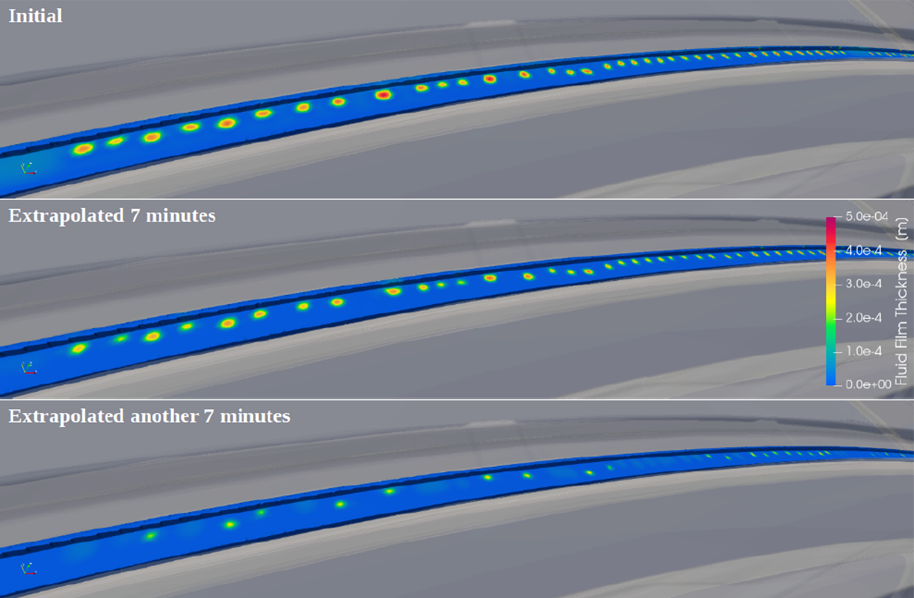Description
Water accumulated on the solid, especially metallic material, surfaces is one of the major sources of localized corrosion. When water is stagnated in certain regions for a long period of time, the corrosion process would be initialized or accelerated. This kind of corrosion harms the life span of parts and, eventually, the life span of the vehicle itself. Thus, to save the cost caused by the corrosion process, it is important to investigate which part will be wet and how long will it stay wet.
Furthermore, the tendency of the automotive industry goes from classical internal combustion engine towards battery-powered electric motor vehicles. As the operating temperature level of electric vehicles is much lower than that of internal combustion vehicles, the stagnated water on vehicle components may stay much longer once it is wet. Thus, it becomes more important to predict the evaporation rate in order to properly and efficiently protect vehicle components.
The main purpose of the study is to appropriately estimate the evaporation rate and the consequent total evaporation time using CFD-simulation technique by simulating the scenarios such that when the solid surfaces, specifically the components of the vehicle, are wet. Once the regions that are vulnerable to localized corrosion including crevice or pitting corrosion are wet, it is important for geometries to have evaporation favorable conditions in order to avoid long-term stagnation of water, which will eventually initiate and accelerate the corrosion process.
Therefore, by accurately estimating the evaporation rate utilizing simulations, a proper guidance can be delivered to part designers in order to consider the adequate conditions for the evaporation and to reflect the results when designing vehicle components so that the corrosion effects caused by the stagnated water to be minimized. Furthermore, cost-efficient protection coatings can be applied, which would increase the durability of vehicles and save the entire production cost.
The evaporation phenomenon at water-air interface is a complex physical process that a number of conditions play roles and, therefore, it is not straightforward to correctly estimate the rate. The major factors that highly affects the evaporation rate are temperature, airflow rate and relative humidity. Taking these factors into account, correct modelling the mass-transfer between water-air phases is required. Furthermore, the common time scale of CFD simulation is in the order of seconds or sometimes in minutes. On the other hand, the time requires for dry-out may takes hours or even days. To overcome this time scale difference, a method to extend the time scale such as manual manipulation of water mass according to the local evaporation rate extrapolation (numerical discretization approach of removing water mass) can be also introduced.

